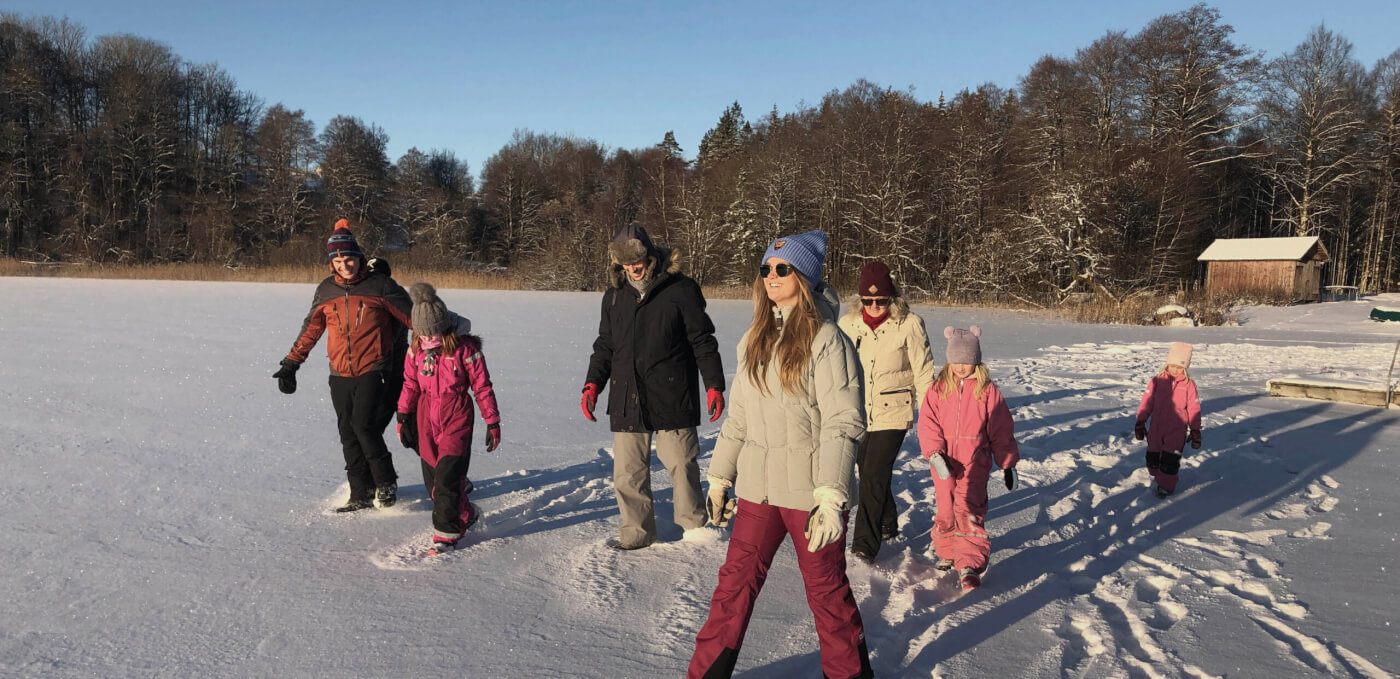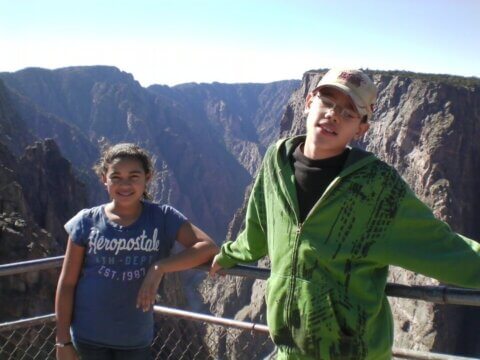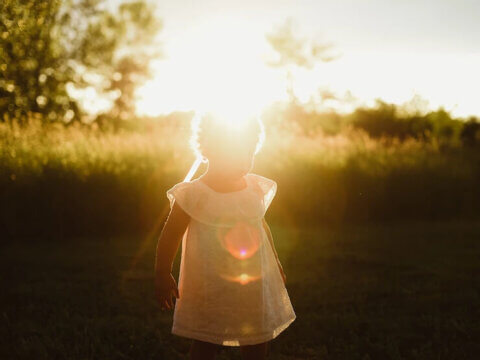Creating a stronger family culture through “friluftsliv”
In Sweden, parents bring their babies outside to nap in the open air, all year round. In Norway, Sundays are reserved for family time outdoors: hiking, cross-country skiing or taking a trip to a cabin in the country. And in Finland, the long-held tradition of roaming and foraging in the forest helps shape children’s identity for life. All are examples of friluftsliv, the age-old Nordic custom of connecting with nature in everyday life — a custom that profoundly shapes family life on these latitudes.
The term friluftsliv lacks an equivalent in the English language but is colloquially translated to “open-air life.” The Norwegian government defines friluftsliv as embracing nature and enjoying the outdoors as a way of life, saying, “friluftsliv offers the possibility of recreation, rejuvenation and restoring balance among living things.” Others describe it as living a simple life or a way of returning to our true home, nature. I like to think of friluftsliv as the outdoorsy cousin of hygge, the Danish concept of cozying up together with loved ones.
Friluftsliv is focused on simple ways to explore nearby nature areas and find joy in being outside, regardless of the weather or season.
What sets friluftsliv apart from many other forms of outdoor recreation is that it’s non-motorized, non-competitive and typically doesn’t require a lot of money or equipment. Instead, it’s focused on simple ways to explore nearby nature areas and find joy in being outside, regardless of the weather or season. While it usually involves learning basic outdoor skills, it doesn’t require you to be an expert or hardcore adventurer, just to have a genuine curiosity and interest in the natural world. More than a set of activities, friluftsliv is a culturally learned rhythm that revolves around feeling oneness with nature and is passed down from one generation to the next through direct experience.
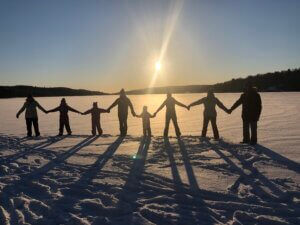
In the Nordic countries, the age-old custom of friluftsliv is a common way to build family culture. Photographer: Linda McGurk
Having grown up in Sweden, the adults in my life ensured that I acquired the friluftsliv culture just as seamlessly as I acquired language. My parents took me on countless walks in the forest behind our house, taught me how to swim in the lake nearby, and introduced me to skiing and camping. By the same token, my grandparents made sure I got to visit every park, nature preserve and historical site within a two-hour drive, nurturing my sense of wonder and appreciation for the natural and cultural landscape where I was raised. Our forays outdoors also strengthened my connection with my caregivers and shaped our entire family culture.
Family culture consists of all the values, beliefs, traditions and customs that are passed down to us from the people to whom we’re related. When I take my daughters outside to build snowball lanterns in the winter, just like my grandmother did with me, it’s an example of our family culture. So is my insistence that we go outside every day, echoing my mom’s often repeated mantra that “there’s no such thing as bad weather, only bad clothing!” And I’m pretty sure I never would have learned to appreciate the annual return of the migratory birds in our neighborhood if I hadn’t taken part in my grandfather’s keen backyard bird-feeding operation.
According to American environmental psychologist Louise Chawla, who has studied the friluftsliv lifestyle in Norway, a family culture based on open-air living can help strengthen emotional bonds both to the land and loved ones. “The very fact that a parent or grandparent chose to take the child with them to a place where they themselves found fascination and pleasure, to share what engaged them there, suggests not only care for the natural world, but equally, care for the child,” she writes.
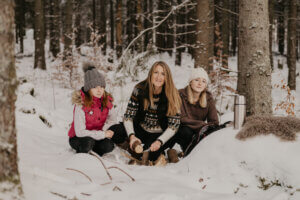
Journalist and author Linda McGurk with her two daughters Nora and Maya. Photographer: Evelina Lind
Outdoors, there are fewer distractions from digital devices and plenty of time and space for everybody to be seen and heard. Unlike most extracurricular activities that children are involved in today, a friluftsliv lifestyle engages the entire family, including the elderly, which fosters togetherness and learning across generations. It can also strengthen the group dynamic as you problem-solve challenges together.
As I write in my book “The Open-Air Life: Discover the Nordic Art of Friluftsliv and Embrace Nature Every Day,” about hiking with my daughters, “In nature, there was no room for selfishness; we must all pull in the same direction and contribute to the greater good of the group. We pushed one another’s buttons on the trail for sure, maybe even more than normal. But we also seemed more tuned into each other. We worked harder, played more, and laughed often.”
While there are many benefits of letting children explore nature independently through free play, the friluftsliv tradition holds that older generations also have an important role to play in terms of leading by example. Firstly, many outdoor skills, from building a campfire to going to the bathroom in the open air, are best learned through socialization. Secondly, Chawla suggests that when a parent or grandparent observes nature in a respectful way — which is a cornerstone of the friluftsliv tradition — it communicates that nature is valuable and encourages the child to adopt the same values.
When a parent or grandparent observes nature in a respectful way… it communicates that nature is valuable.
A 2021 study from Singapore echoes Chawla’s findings, concluding that if spending time with family and friends in nature were to become a social norm, it would help strengthen people’s nature connection and environmentally protective attitudes. This, in turn, will be crucial to attain broad support for conservation policies that are needed to combat climate change and other global crises, especially since children who grow up practicing friluftsliv are more likely to pass on the philosophy to their own offspring.
The Nordic countries have some unique circumstances that make them ideal for fostering a family culture under the open skies. Natural areas in the region are both abundant and easily accessible, and friluftsliv enjoys strong institutional support. Still, the philosophy can be adopted and practiced by families just about anywhere with some greenspace. Our yearning for nature is universal and so is our need to connect with loved ones. By living life the friluftsliv way, we amplify the benefits of both.
“Learning to love the natural world enough to protect it,” an article by Louise Chawla that examines the varying cultural attitudes toward nature found in Norwegian and American environmental activists
“A coordinated research agenda for nature-based learning,” a scholarly article co-authored by Louise Chawla and Cathy Jordan
“Udeskole in Scandinavia: Teaching and learning in natural places,” a Finding Nature News guest column by Peter Bentsen
“Wintermission tackles winter isolation and gets people outside, three cities at a time,” a Finding Nature News feature by Chris Niskanen
“Engaging with nature: Nature affords well-being for families and young people in Finland,” a summary of a scientific study in our Research Hub
-
Feature
GROWING POWER: Urban Roots connects young people with natural spaces, food systems – and one another
-
Feature
Nature photographer Dudley Edmondson has a vision for the representation of Black and Brown faces in the outdoors
-
Network News
Community Spotlight: Prescribe Outside
-
Richard Louv
SPRING FORWARD! 12 Ways to Make Sure Your Kids (and You) Get the Right Dose of VITAMIN N this Spring — and Summer, Too
-
Voices
Placemaking: How to build kinship and inclusive park spaces for children with disabilities


